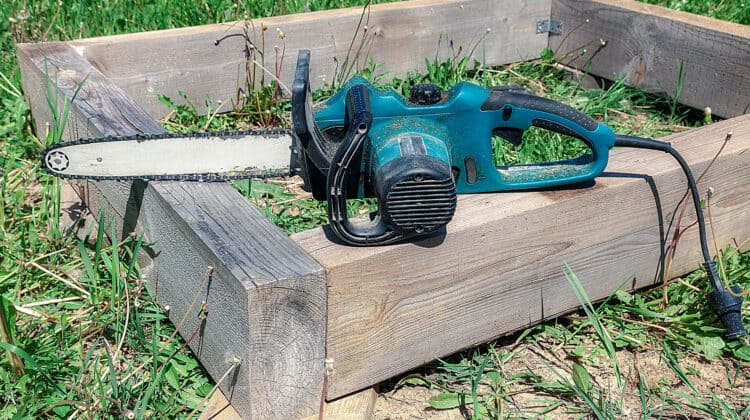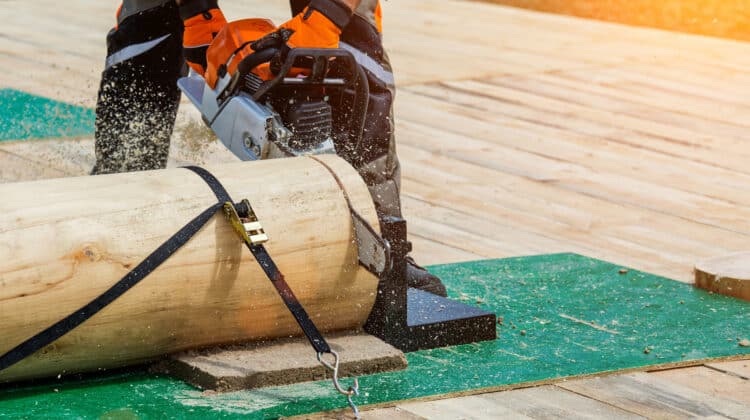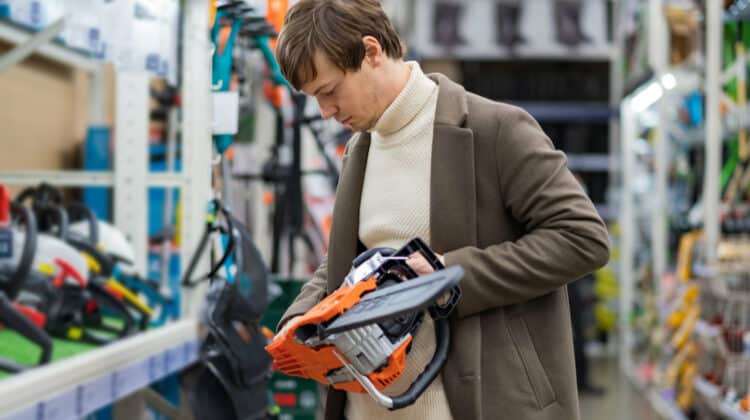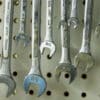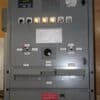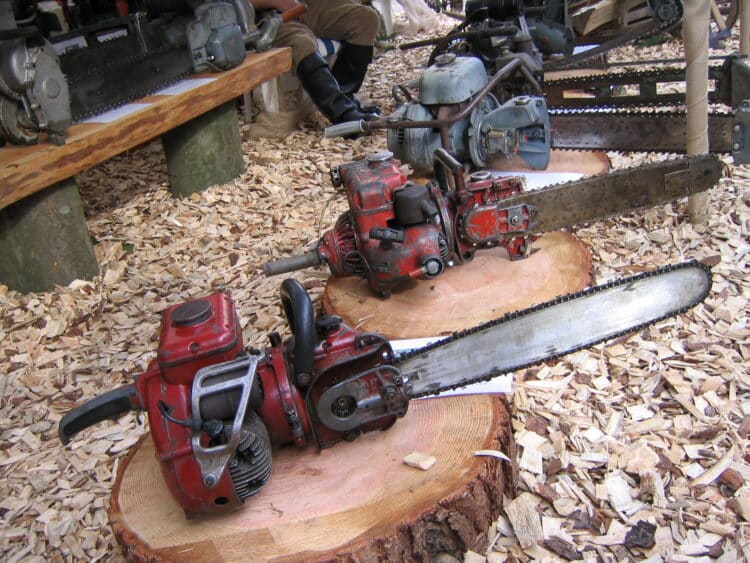
Chainsaws are power tools that can be used to fell trees, cut firewood, and prune branches. They pack a lot of power in a compact machine and most people want to have one in their household just in case the need ever arises.
With the numerous varieties of chainsaws available, it may be tough to decide what you really need. Even if you know what you’re looking for, there are a lot of factors to consider. Buying a chainsaw is tricky because you sometimes find categories within categories.
For example, you may decide to choose an electric chainsaw but then realize there are still different types to choose from. And once you choose a type, you have to sort through a lot of models from different chainsaw manufacturing companies before you can choose the right one for you.
This article will help you answer the question “What size chainsaw do I need?” and give a few more important tips when it comes to choosing a chainsaw.
Table of Contents
How do you measure a chainsaw’s size?
Before we start getting into the factors to consider about a chainsaw’s size, you must first understand how to measure it. There are many ways to measure the size of a chainsaw. For example, you can talk about the length of the bar—that’s the metal bar that juts out from the chainsaw’s engine.
Other than the chainsaw’s bar, you can also check out the size of its engine. The bigger it is, then the more powerful a chainsaw can be. But in most cases, the chainsaw bar is used to measure the size. It is recommended that its size is at least 2 inches longer than whatever you are trying to cut.
Factors to consider in getting the right chainsaw size
Type of saws
There are at least 5 main types of chainsaws available. Each one has its own set of pros and cons, so you have to choose the one that suits you best.
Electric Chainsaws
Electric chainsaws need to be plugged into a power outlet to run. They are very light compared to the other chainsaw models and are cheaper than chainsaws that are gas-powered.
Battery-operated Chainsaws
It is similar to a gas-powered chainsaw but doesn’t need fuel to run. Its only disadvantage is that it’s the most expensive type out there.
Gas-powered Chainsaws
Neither the electric nor battery powered chainsaw types can match the power of a gas-powered chainsaw. The gas-powered chainsaw is a classic, but it does weight heavier and needs more maintenance.
Pole Saws
Pole saws are basically chainsaws that are attached to a long pole. It allows you to reach places you otherwise wouldn’t be able to safely reach with a regular chainsaw. It is not a valid replacement for a regular chainsaw and does have limits.
Manual Chainsaws
A manual chainsaw is a chainsaw that has a handle on each end. They are used with a sawing motion that moves the chain back and forth across the wood in order to cut it.
Your strength
If you do not have the physical strength to carry a big chainsaw, then you should not buy one. You have to be able to wield a chainsaw without tiring out too quickly. Rest breaks are encouraged in between sessions, but you should find a chainsaw that you can carry comfortably.
Your experience with a chainsaw
Chainsaws are power tools that are dangerous when used incorrectly. If you’re just a beginner, then you should start with a smaller-sized chainsaw that you can handle Use a less powerful chainsaw so that you are not overwhelmed and work your way up the sizes as you gain more experience.
Size of the wood you want to cut
The diameter of the wood you are going to be cutting is important in figuring out which size chainsaw you need to buy. Usually, you have to find a chainsaw that is at least 2 inches longer than the diameter of the wood.
For example, if you want to cut down a log that is 12 inches in diameter, then you need a chainsaw with a bar that’s at least 14 inches. If you feel like you don’t need a chainsaw that is that long, then you can opt for a smaller sized chainsaw, and use a different method of cutting to complete your task successfully.
One possible option is cutting from both sides and meeting the cuts in the middle if your chainsaw is too short.
Why you need a chainsaw
Of course, the most important reason for buying a chainsaw. If you are only planning to use it around your home, you can just purchase a chainsaw with a shorter bar length and with less power. A 14-inch chainsaw is usually enough for this use.
But if you are planning to cut down small trees and perform other medium-duty jobs, a chainsaw that is between 16-20 inches may be best for you. For jobs that require heavy work, then you have to get a chainsaw that’s about 22 inches and above. Heavy duty jobs include felling large trees, and this option is usually for the more experienced owners or professionals.
Recommended chainsaw sizes
For felling trees
Small trees
Small trees are trees that are less than 14 inches in diameter. They will only need a chainsaw that is between 12 to 14 inches, depending on the diameter of tree’s trunk.
Medium trees
Medium trees are trees that are about 14 to 16 inches in diameter. Following the standard 2-inch requirement, you can get a chainsaw that is about 16 to 18 inches to help your work quicker.
Large trees
Large trees are trees that are more than 20 inches in diameter. This is mostly for professionals and amateurs should not be attempting to fell trees of this size. You will need a chainsaw that is at least 22 inches or longer for these kinds of jobs.
For pruning
Pruning is the act of removing branches that are no longer useful for the tree’s growth. For these kinds of jobs, you can simply use a pole saw, but if you want a chainsaw, then you should get one that’s about 6 to 10 inches. However, if the branches aren’t that thick, you can get away with just buying a handsaw rather than a full-sized chainsaw.
For trimming branches
If you are going to be trimming branches, then you have to get a chainsaw that is between 8 to 10 inches long. Most branches are about 6 to 10 inches thick, so a smaller chainsaw is appropriate for this task.
For splitting firewood
You are going to need a medium-sized chainsaw if you are planning on splitting firewood. A chainsaw between 14 inches to 16 inches is the best size for you. Although, this may change depending on how thick the log is going to be.
Frequently Asked Questions
Can I just buy the biggest chainsaw available?
To avoid any issues, it may be tempting to just get the largest chainsaw you can find so you can use it for anything. But you have to note that they are heavier than a smaller chainsaw and are trickier to handle. You will tire easily, and if you don’t take breaks more often, your arms could be fatigued.
If you are using a chainsaw while you are tired, then you have less strength to push against chainsaw kickback. Furthermore, large chainsaws cannot be used for small tasks that require details and they are also way more expensive.
Take the time to think about the future uses of your chainsaw. Don’t just buy the biggest one to boost your ego.
What do I do if my chainsaw is too long?
If your chainsaw is too long for the task, you are in risk of kickback. Some chainsaws allow you to replace the guide bar, but it depends on the model that you have. If you don’t feel comfortable with using a chainsaw that’s too long for the job you need, then ask a professional to do it for you, or have the store check and see if you can have the bar replaced.
Take note that the longer a chainsaw is, the more you are at risk of violent kickbacks and they tend to vibrate and weigh more than the smaller sizes.
What do I do if my chainsaw is too short?
If you find that a chainsaw is not long enough for what you want to do, you can just make multiple cuts around the wood in order to cut through it. For example, you can start cutting from one side, stop in the middle, then continue cutting from the other side.
It’s a little more work, but the job gets done, nonetheless. However, if the wood is thicker than twice the diameter of your chainsaw, then you have to get a larger chainsaw in order to finish.
Conclusion
So, when you ask the question, “what size chainsaw do I need?” the answer is it depends on what you need it for. It takes careful consideration before you can finally narrow down your choices and pick a chainsaw that is right for you.
